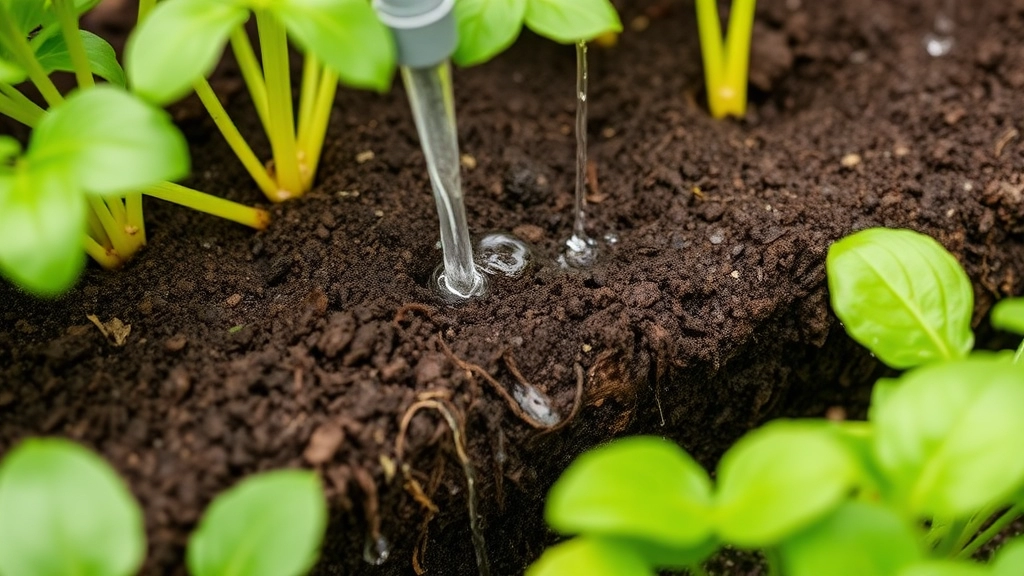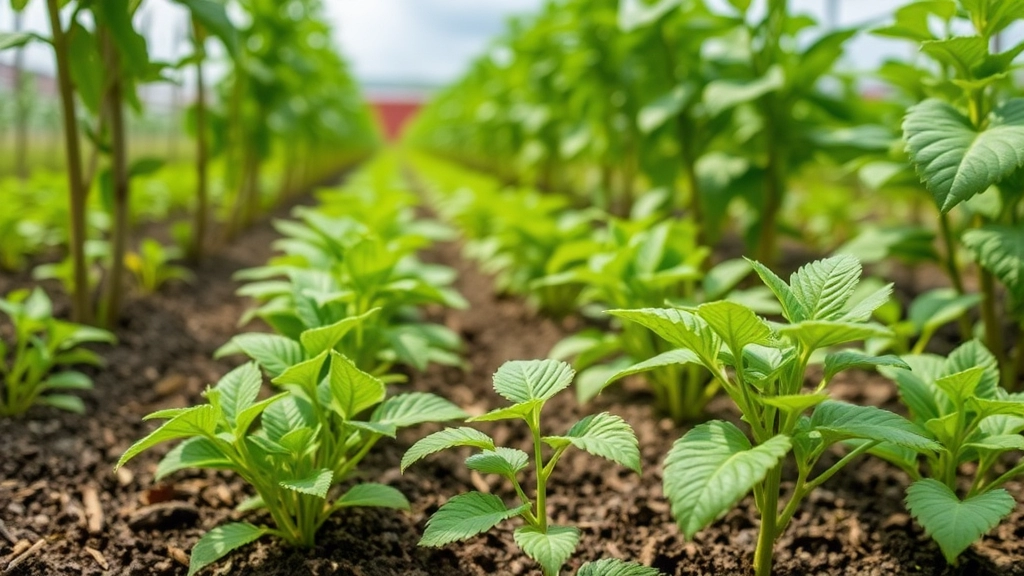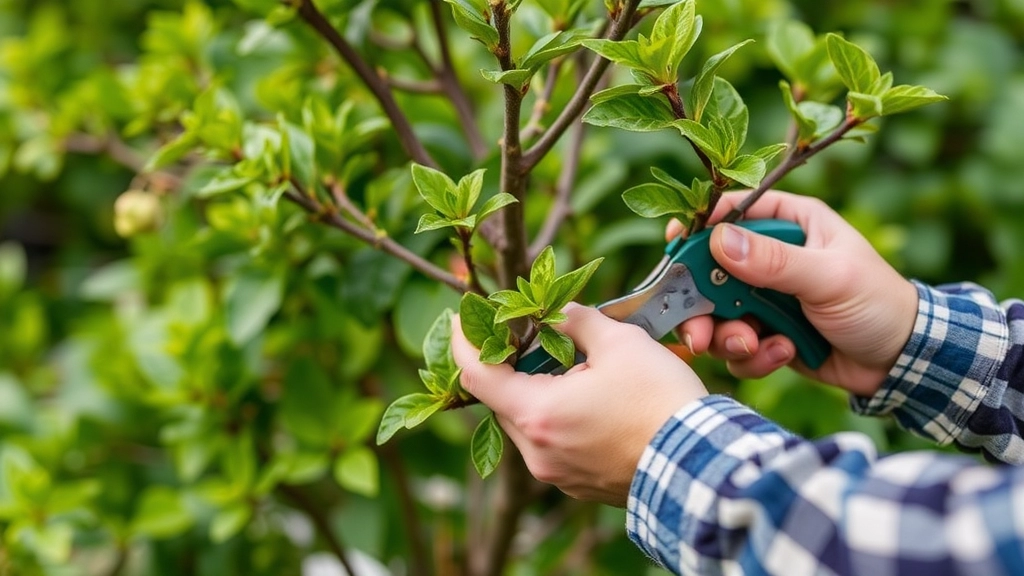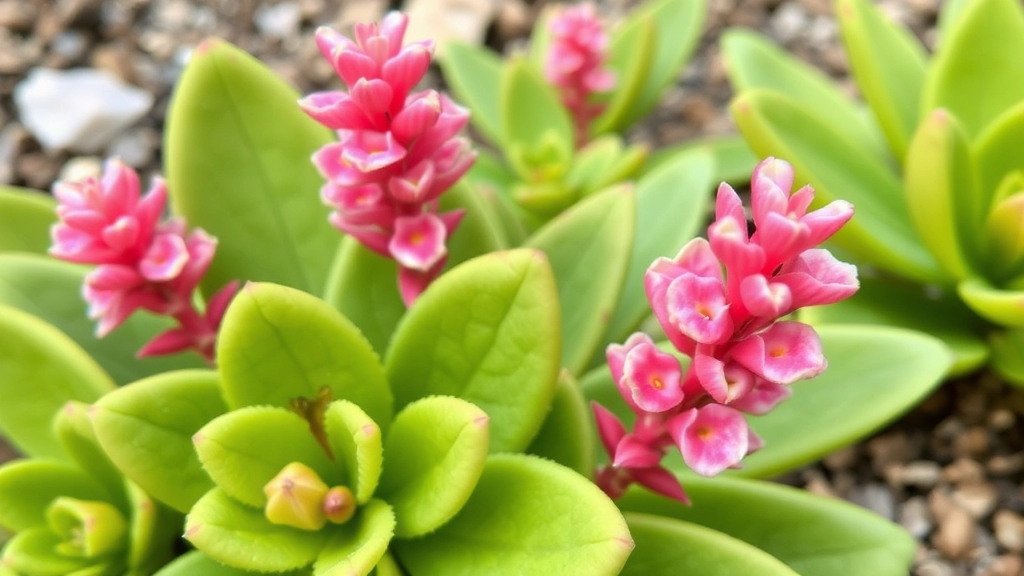Kalanchoe Synsepala Walking Plant
When it comes to the Kalanchoe Synsepala Walking plant, understanding its unique growth pattern is essential. This succulent is known for its fascinating ability to produce stolons, allowing it to self-propagate and spread. To ensure your Walking Kalanchoe thrives, it’s crucial to provide optimal light conditions, typically bright but indirect sunlight.
Optimal Light Conditions for Walking Kalanchoe
Are you struggling to find the right light conditions for your Walking Kalanchoe?
Understanding the optimal light requirements for this unique succulent is crucial for its health and growth.
Walking Kalanchoe, known for its vibrant leaves and easy-care nature, thrives best in bright, indirect sunlight.
Here are some essential tips to ensure your plant receives the right amount of light:
- Bright Indirect Light: Place your Walking Kalanchoe near a window where it can bask in bright, filtered light. Avoid direct sunlight, as it can scorch the leaves.
- Morning Sun: If you can, expose your plant to morning sunlight for a couple of hours. This gentle light is beneficial without the harshness of afternoon rays.
- Rotate Regularly: To promote even growth, rotate your plant every few weeks. This ensures all sides receive adequate light.
- Signs of Insufficient Light: Watch for signs like elongated stems or pale leaves, which indicate your plant may be stretching for light. Adjust its position accordingly.
- Artificial Light: If natural light is limited, consider using grow lights. They can provide the necessary spectrum for healthy growth.
For more detailed care tips, check out our ultimate guide to caring for Kalanchoe succulents and learn about the best tips and techniques for pruning Kalanchoe plants.
Watering Practices: Preventing Root Rot and Overwatering

So, you’ve got your Kalanchoe set up in the perfect spot, and now you’re wondering about watering.
How much is too much?
It’s a common worry, and rightly so. Overwatering is one of the main reasons these beauties suffer.
Here’s the lowdown on watering practices to keep your Kalanchoe thriving:
- Check the Soil: Always feel the top inch of the soil. If it’s dry, it’s time to water. If it’s still moist, hold off for a few more days.
- Water Deeply: When you do water, give it a good soak. Ensure the water reaches the roots. Let it drain completely to avoid standing water.
- Use the Right Pot: A pot with drainage holes is a must. This helps excess water escape, preventing root rot.
- Seasonal Adjustments: In the growing season (spring and summer), your Kalanchoe will need a bit more water. In the winter, scale back. They prefer to dry out a bit between waterings.
- Signs of Trouble: Yellowing leaves? That’s often a sign of overwatering. If the leaves feel mushy, you might be too generous with the water.
Keeping these tips in mind will help you find that sweet spot for your watering routine.
When it comes to cultivating a thriving Kalanchoe, the right soil selection is paramount. You might wonder, “What type of soil is best for my Kalanchoe?” The answer lies in ensuring proper drainage.
Kalanchoes are succulents, and they thrive in well-draining soil. Poor drainage can lead to waterlogged conditions, which are a primary cause of root rot. Here are some key points to consider:
– **Cactus Mix**: A pre-mixed cactus or succulent soil is often ideal. It provides the necessary drainage while retaining some moisture.
– **DIY Soil Mix**: You can create your own mix by combining:
– 50% potting soil
– 25% perlite or pumice
– 25% sand
– **pH Levels**: Aim for a slightly acidic to neutral pH (around 6.0 to 7.0) to promote optimal growth.
In addition to soil, the pot you choose plays a crucial role. Ensure your pot has:
– **Drainage Holes**: These allow excess water to escape, preventing soggy roots.
– **Material Matters**: Terracotta pots are excellent as they absorb moisture, helping to regulate soil moisture levels.
Keep an eye out for signs that your Kalanchoe might be struggling due to poor soil conditions:
– Yellowing leaves
– Wilting despite adequate watering
– Root rot, identifiable by a foul smell or mushy roots
By carefully selecting the right soil and pot, you can create an environment where your Kalanchoe flourishes. For more detailed care instructions, you might find our [ultimate guide to growing Kalanchoe Pink Butterflies](https://planthq.org/complete-guide-to-growing-and-caring-for-kalanchoe-pink-butterflies/) helpful. Additionally, if you’re interested in propagation techniques, check out our [step-by-step guide on propagating Kalanchoe Tomentosa](https://planthq.org/how-to-propagate-kalanchoe-tomentosa-stepbystep-guide/).
Fertilization and Nutritional Needs During Growing Season

As we delve deeper into the care of your Kalanchoe, understanding its fertilization needs is crucial for promoting vibrant growth and abundant blooms. Many plant enthusiasts worry about how to provide the right nutrients without overwhelming their plants.
Understanding Nutritional Needs
Kalanchoe thrives during the growing season, typically in spring and summer. During this time, it requires a balanced approach to fertilization to support its growth. Here are some key points to consider:
- Type of Fertilizer: Use a balanced, water-soluble fertilizer with an N-P-K ratio of 20-20-20 or similar.
- Frequency: Fertilize every 4-6 weeks during the growing season to ensure consistent nutrient supply.
- Dilution: Always dilute the fertilizer to half the recommended strength to prevent fertilizer burn.
Signs of Nutritional Deficiency
It’s essential to keep an eye on your Kalanchoe for signs that it may be lacking nutrients. Here are some indicators:
- Yellowing Leaves: This could signify a nitrogen deficiency.
- Stunted Growth: If your plant isn’t growing as expected, it may need more nutrients.
- Poor Flowering: A lack of blooms might indicate insufficient phosphorus.
Tips for Effective Fertilization
- Watering Before Fertilizing: Always water your Kalanchoe a day before fertilizing to help the plant absorb nutrients better.
- Avoid Fertilizing in Dormancy: Refrain from fertilizing during the fall and winter months when the plant is dormant.
- Use Organic Options: If you prefer organic methods, consider using compost or diluted fish emulsion as alternatives.
When it comes to expanding your Kalanchoe collection, understanding propagation methods is vital. Many enthusiasts often wonder how to effectively propagate their plants without causing damage.
### Stolon Propagation
Stolons, or runners, are a fantastic way to propagate Kalanchoe. Here’s how to do it:
– **Identify Healthy Stolons**: Look for healthy, robust stolons that are connected to the parent plant.
– **Cut the Stolon**: Use clean, sharp scissors to sever the stolon just below the node.
– **Allow to Callous**: Place the cut end in a dry area for a few hours to allow it to callous over.
– **Plant in Soil**: Once calloused, plant it in well-draining soil, ensuring the node is buried.
This method not only encourages new growth but also helps maintain the health of the parent plant.
### Leaf Cutting Technique
Leaf cutting is another popular method for propagating Kalanchoe. It’s straightforward and effective:
– **Select a Healthy Leaf**: Choose a plump, healthy leaf from the parent plant.
– **Cut the Leaf**: Use sterilized scissors to cut the leaf into sections, each about 2-3 inches long.
– **Callous the Cuts**: Lay the cut pieces flat in a dry area for a couple of days to allow the cuts to dry.
– **Place in Soil**: Once the cuts have calloused, plant them upright in well-draining soil.
This technique not only allows for the creation of new plants but also gives you the satisfaction of nurturing them from a single leaf.
Both methods are effective, and your choice may depend on the resources you have available. For more detailed guidance, you can refer to the [complete care guide for Kalanchoe synsepala](https://planthq.org/complete-care-guide-for-kalanchoe-synsepala-baker/) or learn about the [step-by-step guide to propagating Kalanchoe tomentosa](https://planthq.org/how-to-propagate-kalanchoe-tomentosa-stepbystep-guide/).
Pruning and Maintenance for Better Growth

Are your Kalanchoe plants looking a bit unruly?
Pruning is your secret weapon for keeping them vibrant and healthy.
Why Prune?
Pruning isn’t just about aesthetics; it encourages better growth and prevents overcrowding. Here’s how to do it right:
- Timing is Key:
- Best done in spring or early summer when the plant is actively growing.
- Tools You’ll Need:
- A clean, sharp pair of scissors or pruning shears.
- Gloves if you’re sensitive to sap.
- What to Cut:
- Remove dead or yellowing leaves.
- Trim back leggy stems to encourage bushier growth.
- Snip off any spent flowers to promote new blooms.
Maintenance Tips:
- Regular Checks:
- Keep an eye on your plants. A little trim here and there can go a long way.
- Dusting Off Leaves:
- Wipe leaves with a damp cloth to keep them clean and enhance photosynthesis.
A Little Story:
I remember when I first started my Kalanchoe collection. I was hesitant to prune, thinking I might ruin them. But after a little nudge from a friend, I took the plunge. The result? My plants flourished like never before!
By incorporating these pruning and maintenance tips, you’ll set your Kalanchoe up for success.
Managing Common Pests and Problems
As we delve deeper into the care of your walking Kalanchoe, it’s essential to address a significant concern: pests and problems that can hinder its growth.
Common Pests to Watch For
Walking Kalanchoe can be susceptible to several pests. Here’s a quick rundown:
- Mealybugs: These small, white, cotton-like pests often hide in leaf joints.
- Aphids: Tiny and green, they can cluster on new growth, sucking sap and causing stunted growth.
- Spider Mites: If you notice fine webbing on your plant, these tiny arachnids might be the cause.
- Scale Insects: These pests appear as small, brown bumps on stems and leaves.
Signs of Infestation
Look out for these signs to catch infestations early:
- Yellowing leaves
- Sticky residue on leaves (honeydew from aphids)
- Webbing or speckled leaves (spider mites)
- Visible pests on the plant
Effective Management Strategies
To keep your walking Kalanchoe healthy, consider these management strategies:
- Regular Inspections: Check your plant weekly for any signs of pests.
- Natural Predators: Introduce ladybugs or lacewings to control aphid populations.
- Neem Oil: This natural pesticide can effectively deter many pests. Spray it on affected areas every few weeks.
- Isolation: If you spot an infestation, isolate the affected plant to prevent spreading.
Addressing Environmental Problems
Apart from pests, environmental issues can also affect your Kalanchoe. Here’s what to keep in mind:
- Overwatering: This can lead to root rot, which is often mistaken for pest damage. Ensure proper drainage.
- Insufficient Light: Poor lighting can weaken your plant, making it more susceptible to pests.
By staying vigilant and implementing these strategies, you can effectively manage common pests and ensure your walking Kalanchoe thrives. For more detailed care tips, check out our guide on Kalanchoe Beharensis care and our ultimate guide to growing Kalanchoe succulents.
FAQs on Kalanchoe Synsepala Walking
How often should I water my Kalanchoe Synsepala Walking?
Check the top inch of the soil before watering. If it’s dry, it’s time to water. Water deeply and let it drain completely. Adjust watering frequency based on the season, with more water needed in spring and summer.
What are the signs of overwatering my Kalanchoe?
Yellowing leaves and mushy texture are common signs of overwatering. Ensure the pot has drainage holes to prevent root rot.
What type of fertilizer should I use for my Kalanchoe?
Use a balanced, water-soluble fertilizer with an N-P-K ratio of 20-20-20. Dilute it to half the recommended strength and fertilize every 4-6 weeks during the growing season.
How can I tell if my Kalanchoe is lacking nutrients?
Look for yellowing leaves (nitrogen deficiency), stunted growth, or poor flowering (phosphorus deficiency) as indicators of nutritional deficiency.
When is the best time to prune my Kalanchoe?
Prune in spring or early summer when the plant is actively growing. Use clean, sharp scissors or pruning shears for best results.
What should I remove when pruning my Kalanchoe?
Remove dead or yellowing leaves, trim back leggy stems, and snip off spent flowers to encourage new blooms and bushier growth.
How can I maintain my Kalanchoe’s health between prunings?
Regularly check your plant and perform minor trims as needed. Wipe leaves with a damp cloth to keep them clean and enhance photosynthesis.
Can I use organic fertilizers for my Kalanchoe?
Yes, organic options like compost or diluted fish emulsion are great alternatives for fertilizing your Kalanchoe.
Should I fertilize my Kalanchoe during its dormant period?
No, avoid fertilizing during the fall and winter months when the plant is dormant.
References
-
Kalanchoe Plant Care: How To Grow A Kalanchoe
-
How to Grow Kalanchoe Indoors
-
Kalanchoe: How to Grow and Care for Kalanchoe Plants
